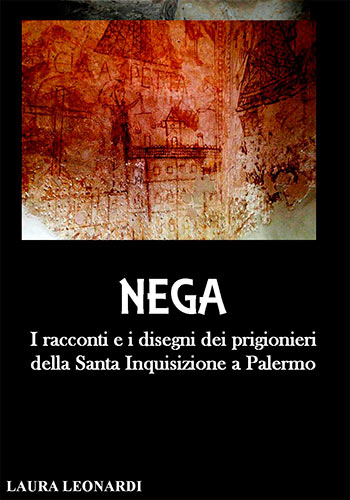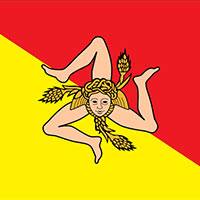Museum of the Holy Inquisition in Sicily (Carceri dell'Inquisizione)
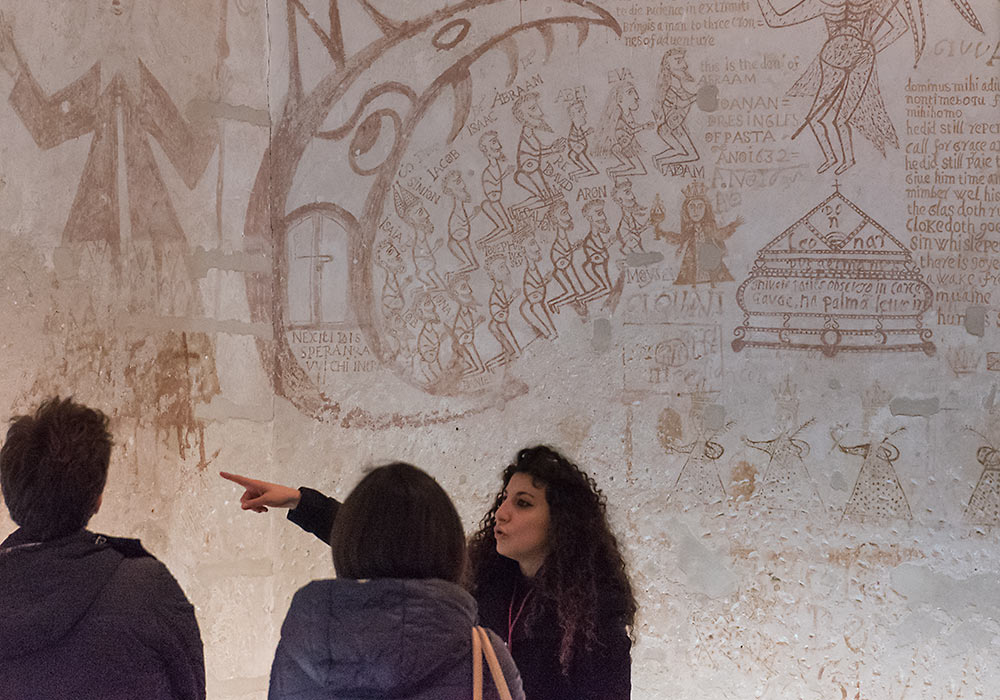
Museum of the Holy Inquisition.
Photo: Per-Erik Skramstad / Wonders of Sicily
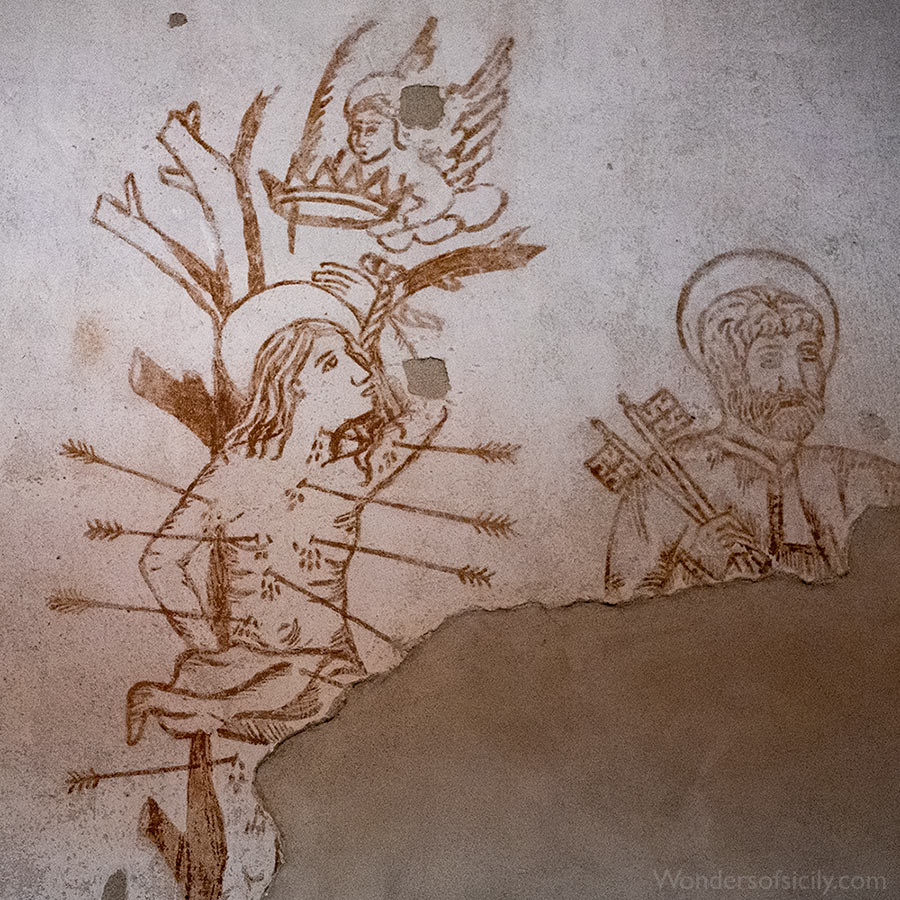
Carceri dell'Inquisizione, also known as Carcere dei Penitenziati, (open daily 10–18) in the building next to Palazzo Chiaramonte, Palermo.
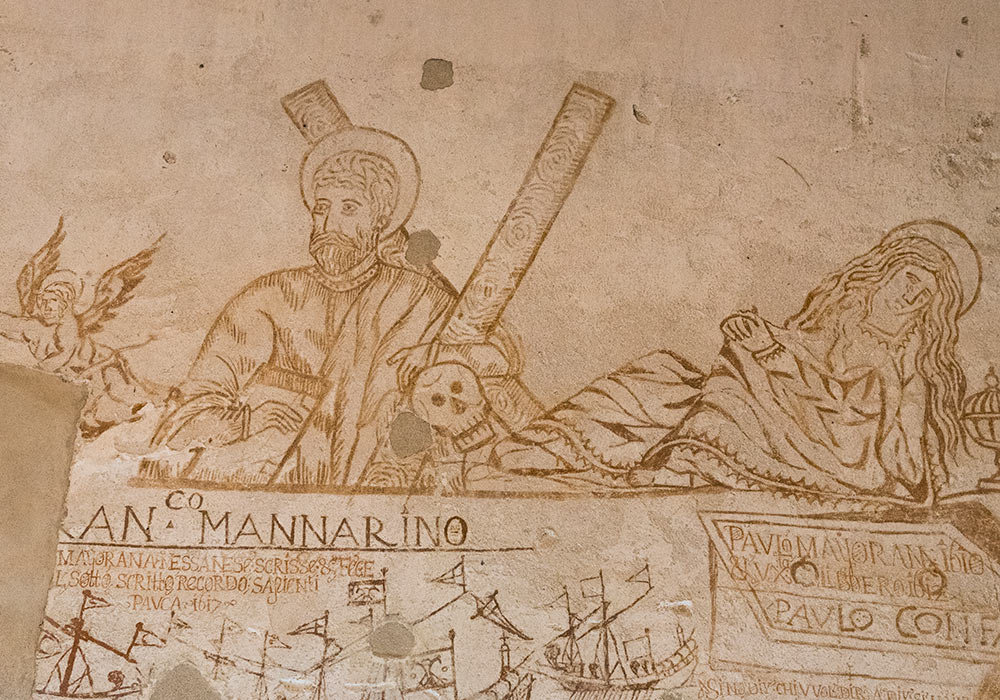
In 1906 the famous anthropologist Giuseppe Pitrè discovered prisoners drawings in three cells. In 2005 restoration work started, uncovering 10 prison cells covered with with drawings made by the prisoners.
Photo: Per-Erik Skramstad / Wonders of Sicily
The Museum of the Holy Inquisition is situated in the "Penitenziati" prison right next to the Palazzo Chiaramonte. It exhibits the prisoners' drawings on the wall in their prison cells. The museum is still a work in progress (no homepage and no or little information about the history of the "holy" inquisition in Sicily or elsewhere, and no information about the "witches", inconvenient intellectuals, artists, heretics, monks, nuns etc. who were the victims of this gruesome office).
The Museum of the Holy Inquisition was built 1603-1605 because the "Philippine Prisons" inside the Chiaramonte Palace weren't big enough to hold the growing number of prisoners. There were 8 cells on the ground floor and 6 cells on the first floor.
When the Holy Office was closed in 1782, all the instruments of torture and all documents were burnt by the viceroy Caracciolo.
The prisoner's drawings on the wall were covered by plaster in the 19th century when the building became Criminal Court and archive.
In 1906 the famous anthropologist Giuseppe Pitrè discovered prisoners drawings in three cells. In 2005 restoration work started, uncovering 10 prison cells covered with with drawings made by the prisoners.
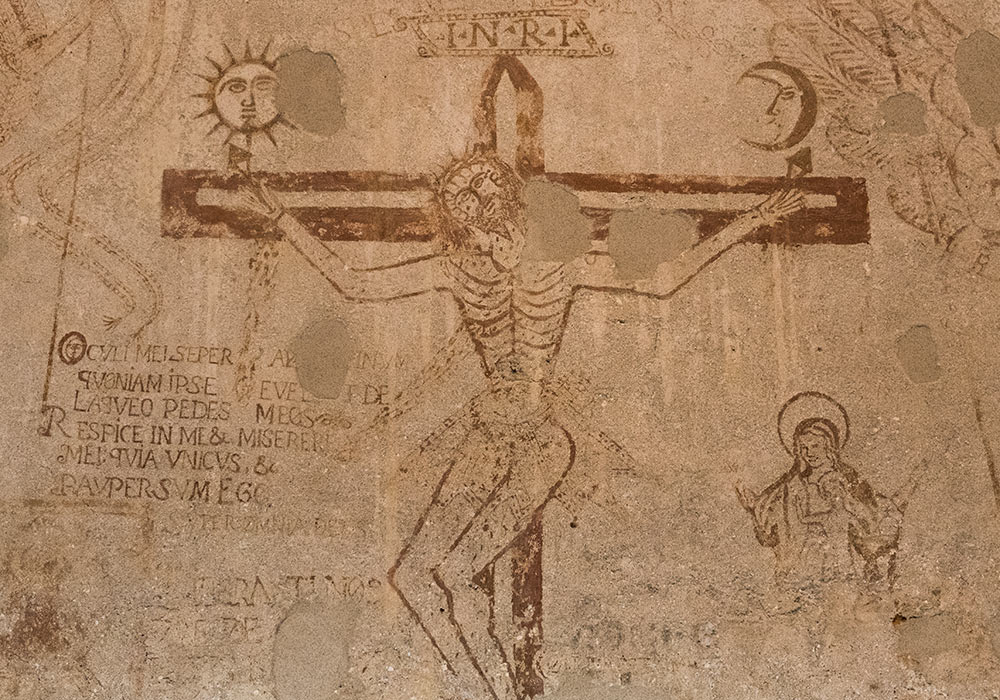
Drawing in one of the prison cells
Photo: Per-Erik Skramstad / Wonders of Sicily
Excerpts from Laura Leonardi's book NEGA. I racconti e I disegni dei prigionieri della Santa Inquisizione a Palermo. (NEGA - DENY. Stories and drawings of the the Holy Inquisition’s prisoners in Palermo)
This Italian e-book is full of descriptions, pictures and sounds! A virtual journey inside the past and a place full of pain and memory. It tries to describe the prisoners’ thoughts and fears. The author tells their stories through the documents found by Maria Sofia Messana in Spain and the pictures left on the walls, discovered by Giuseppe Pitrè. She writes seven stories about a witch, a little child, several sad men devoted to Saint Lucia and a murderer. She explains the meaning of every single sign left inside the prison and gives important insights. At the moment this e-book is only available in Italian.
A short extract taken from the chapter “Il piccolo schiavo: Francesco Mannarino” (The little slave: Francesco Mannarino)
“ […] That evening I heard one of my fellow-sufferer tells about a battle that took place over twenty years ago: the battle of Lepanto.
The young man told of this famous battle between Christians and Muslims and the clash between their fleets!
It was a little moment, full of imagination, which gave me back my lost childhood. […] So I drew the battle on a cell’s wall just as I imagined it so many times: huge ships that look each others, vibrant in the wind and strong in their ideals! […]
We know his story thanks to the sources found recently in Madrid. Francesco Mannarino was kidnapped and forced to follow the Muslim religion. It was not unusual. Slavery was widespread in that period and it was still up to the XIX century. The “white goods”, that is white men and women , was easily sold and it was very valuable.
[…]
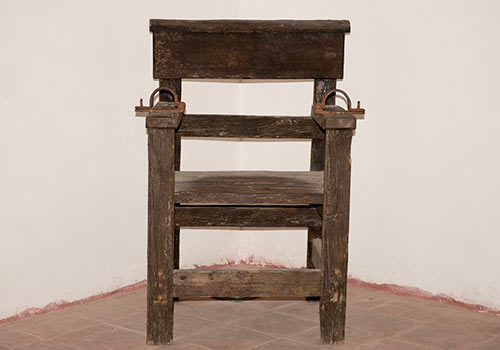
A reconstruction of Fra Diego La Matina's chair:
Photo: Per-Erik Skramstad / Wonders of Sicily
A short extract taken from the chapter “L’Assassino eretico: Fra Diego La Matina” (The heretic murderer: Fra Diego La Matina)
“[...]Yes, I killed him. I killed out of anger, that kind of anger that thirsts for justice. That uncontrolled anger that has the salty taste of blood.[...] I did not hear any sound but his skull that broke under my hands! [...]
I killed my inquisitor, Monsignor Juan Lopez de Cisneros [...]”
Fra Diego La Matina was a monk. He was born in 1622 in Racalmuto, near Agrigento, and he died at the stake in Palermo on March 17, 1658.
He had an active personality and he immediately showed its intolerance against the wicked machine of the Holy Inquisition. He was arrested and acquitted three times by the Holy Office before finishing to spend five years of forced labor as a convict without any comfort or support but water and a loaf of bread. He is believed to have made a deal with the devil. He was condemned to the stake while the body of the inquisitor he killed, Monsignor Juan Lopez de Cisneros, rests as a martyr at the Church of Santa Maria degli Angeli in Palermo. In 1964, Leonardo Sciascia wrote Morte dell'Inquisitore (Death of an Inquisitor), an investigation into the murder of the inquisitor […]
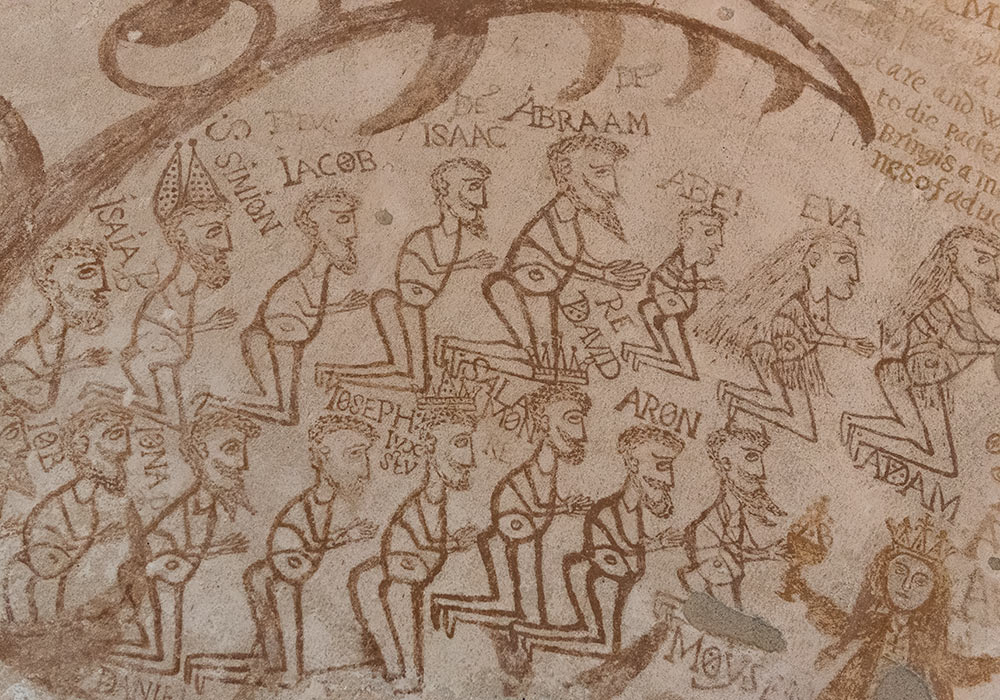
Photo: Per-Erik Skramstad / Wonders of Sicily
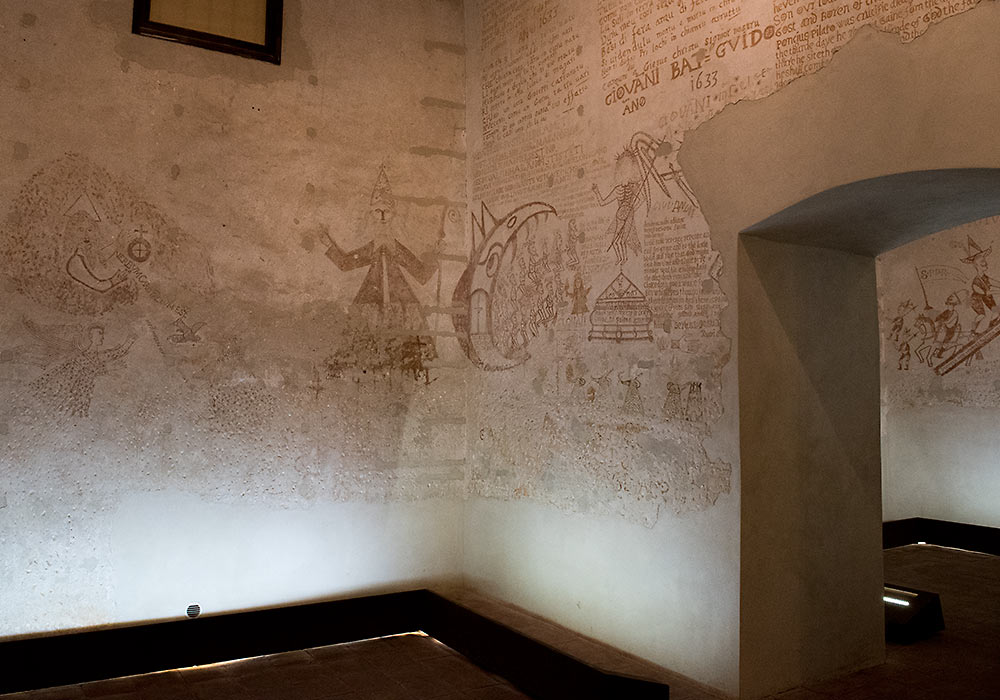
One of the cells.
Photo: Per-Erik Skramstad / Wonders of Sicily
Opening hours of the Museum of the Holy Inquisition (Carceri dell'Inquisizione)
The museum is open daily 10–18
How to find the museum
The Museum of the Holy Inquisition is situated in the building next to Palazzo Chiaramonte, Palermo (Palazzo Chiaramonte, Piazza Marina, 61)
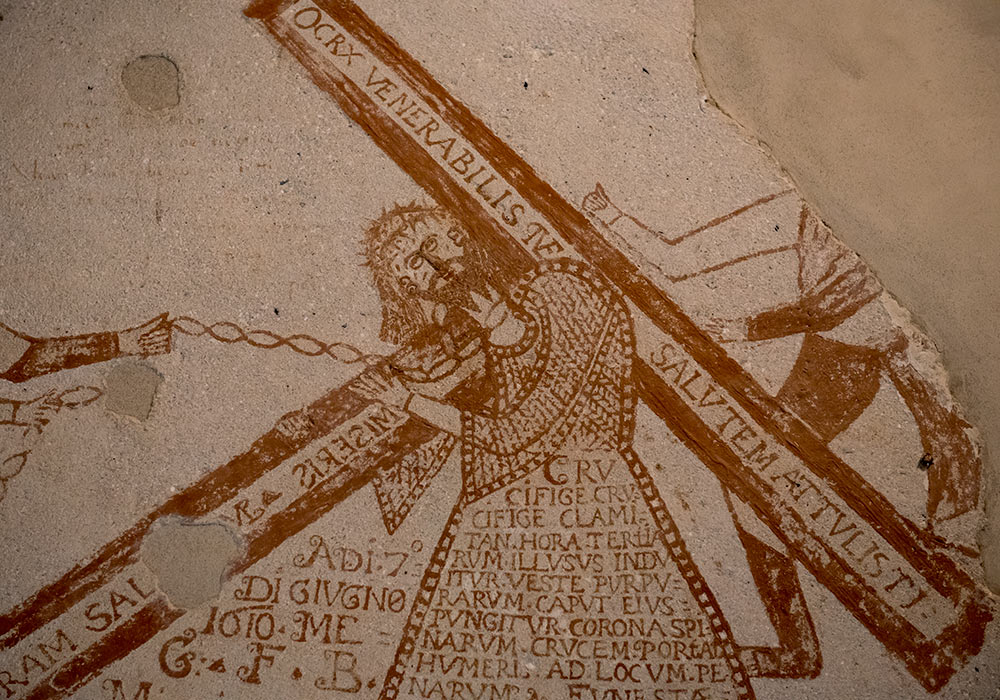
Photo: Per-Erik Skramstad / Wonders of Sicily
Literature and links
- Leonardo Sciascia: Death of an Inquisitor
- Giuseppe Pitrè (December 21, 1841 – April 10, 1916), Italian folklorist, medical doctor, professor, and senator in Sicily
- Laura Leonardi: NEGA. I racconti e I disegni dei prigionieri della Santa Inquisizione a Palermo. (NEGA - DENY. Stories and drawings of the the Holy Inquisition’s prisoners in Palermo) (E-book)
About Laura Leonardi
Laura Leonardi was born in Palermo in 1990. She took her first degree in Disciplines of Arts, Music and Entertainment in 2012. During her studies she discovered antiques silvers of XVII- XIX century, hidden inside an old church in the centre of Palermo and wrote her first sperimental thesis that has been published in 2014 on the important Italian on-line magazine OADI – Rivista dell’Osservatorio delle arti decorative in Italia, about fine art in Italy.
In 2014 she took her second degree in History of Art and wrote another sperimental thesis about new technologies and art. The result of this thesis is going to be published soon.
She wrote an e-book about Inquisition and tortures in Palermo in XVII century that has been self-published for free in November 2014 on Smashwords.
She has a great love for photography and she has her own blog, gli Occhi della Voce.She travels all around Sicily , Italy and the world to tell and show to everyone beauty, art and history that she can "capture" with her eyes and camera. Her motto: the earth without art is just…eh!

